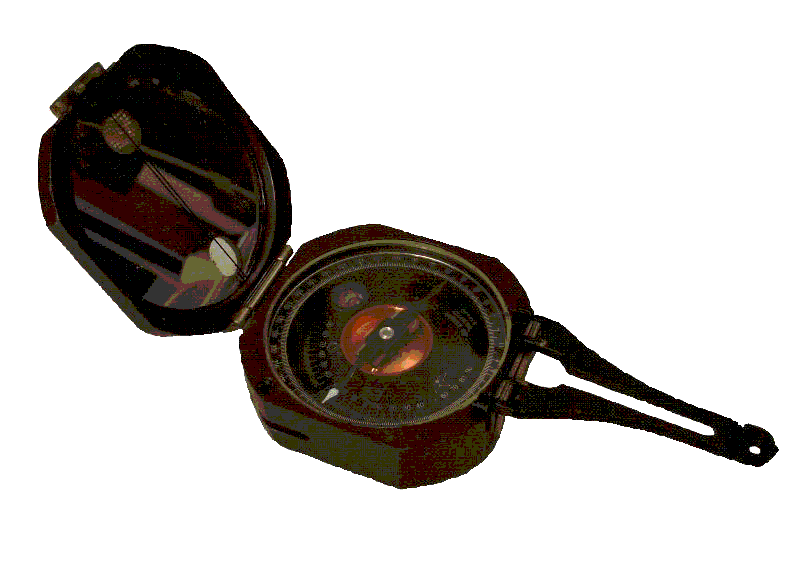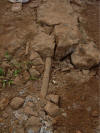Supply Problems
-----------
-----------
-----------
-----------
-----------
-----------
Village of Baoma, Sierra Leone
NAVIGATION

|
Dry season low
flow Near the end of
the dry season the flow from the diorite bedrock springs falls to near
zero. If the fracture flow
interpretation of groundwater circulation is correct, then the steeper
hydraulic gradient that exists at the end of the wet season and into the
dry season drives groundwater to discharge at the diorite bedrock spring
vents at a higher rate than during the dry season. As a result,
relatively more water
is taken from the more heavily
contaminated Garden Spring towards the end of the dry season. Bacteria All of the Baoma
springs show evidence of bacterial contamination, and the degree of
bacterial contamination is believed to vary from the wet season to the
dry season. No analyses for
individual pathogenic bacteria has been performed, but it is interpreted
that the Garden Spring is more likely to behave as a vector for
transmission of human pathogenic bacteria than the diorite bedrock
springs. Disinfection Shock chlorination
is occasionally used at the Habbour Spring catchment.
An unknown quantity of chlorine in the form of chlorine tablet(s)
is interoduced into the spring catchment, which has a volume of
approximately 1,700 gallons.
The resultant concentration of chlorine is unknown and is likely
insufficient to provide effective disinfection. Some villagers
boil spring water, which may be the most effective disinfection practice
that is currently in use.
However, the cost of charcoal for this purpose is significant and cost
is a disincentive to the use of disinfection by boiling. Some villagers
disinfect spring water by point-of-use chemical addition.
One such home disinfection system was inspected and it is
believed that the amount of disinfectant that is aded to each 5-gallon
bucket of water is insufficient to provide effective disinfection. Inadequate
disinfection is believed to be widespread.
An informal health survey of villagers indicates that water-borne
disease is commonplace, and varies from the dry season to wet season. Source area
protection Although its flow
rate is substantial, the Garden Spring is an undesirable water source
for drinking water. Many of
the villagers who use this water either disinfect the water by boiling
or else use a chemical disinfectant.
The cost for charcoal to boil the Garden Spring water is
significant, and the use of disinfectants appears to be irregular and
likely ineffective at times.
Because the Garden Spring is located immediately downgradient
from the village, it is not likely that source water protection will be
effective at this spring.
Land development upslope from the Habbout, Kamera and Motema diorite
bedrock springs is slight, and specific source area protection measures
are in place at the Habbour Spring.
Land development
has begun in the ridge-top area to the south of the West Side Spring,
and this source source may eventually suffer a similar pollution load to
that of the Garden Spring. Source
Sufficiency The population of
Baoma is believed to be on the order of 600 individuals.
A preliminary survey of water use indicates that the average, dry
season water use may be on the order of from 5 to 10 gallons per day
(gpd). Assuming that these
figures are reasonable, the daily water demand during the dry season is
on the order of from (600 people x 5 gpd) = 3,000 gpd to (600 people x
10 gpd) = 6,000 gpd.
Assuming an average daily demand of 5,000 gpd, this demand could be met
by a minimum flow of (5,000 gpd / 1,440 minutes/day) = 3.5 gpm if the
flow is captured into non-leaking system storage.
System
Storage
Leakage Chronic leakage Substandard pipe installation The present system
of delivery of water to private homes and to tap stands by
shallowly-buried plastic pipe results in leakage and/or loss of much of
the water that is collected from the springs.
Water delivery is often interrupted by leaks and the need to take
the water system off-line while the leaks are being repaired.
Because the water systems are generally unable to maintain a cash
reserve to meet emergency needs or to stockpile water system parts and
supplies, the water systems are often off-line longer than may be
necessary. Funding Many villagers
have the attitude that water should be free.
This attitude may come from village life in the interior
provinces, where the population density was significantly less than in
Baoma, and where little or no measures were taken to manage water
sources. The situation is
very different in Baoma, where a relatively high population density
needs to obtain water from a limited number of sources. Some of the
villagers are unable to pay money for water services.
It may be useful to identify specific "in-kind" tasks that these
villagers can routinely perform to support the operation of water
systems in lieu of cash payments.
More about the
hydrogeologic setting of Baoma |


